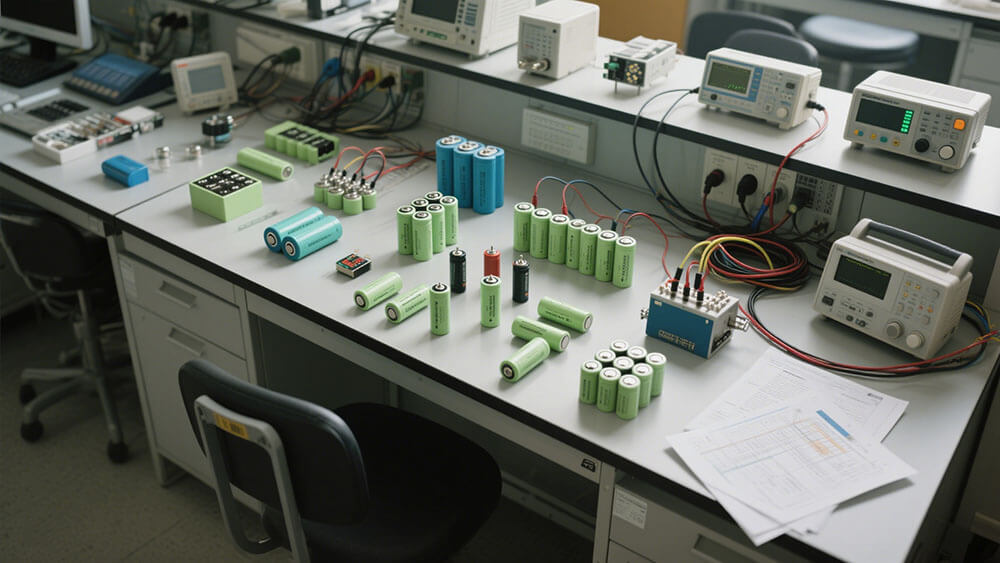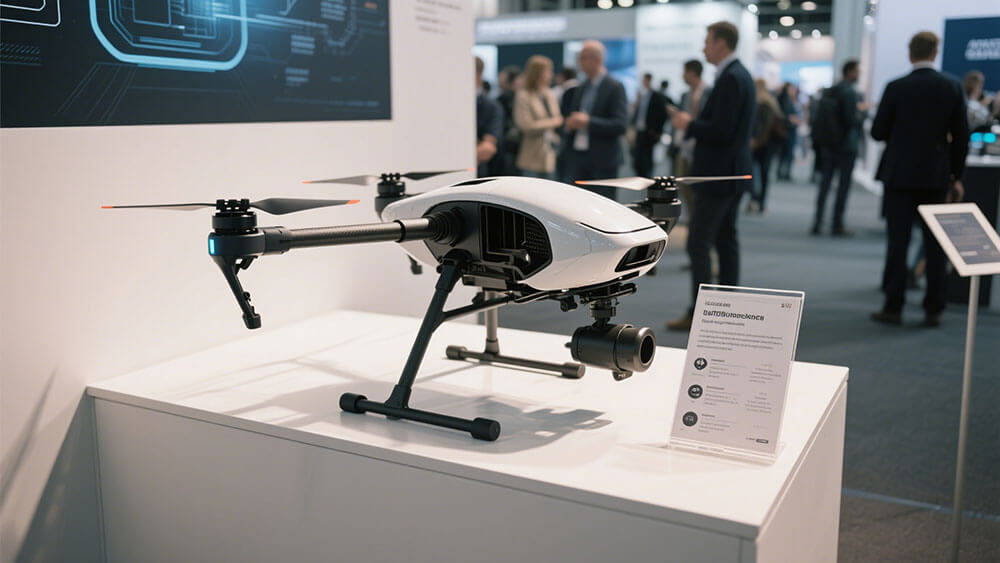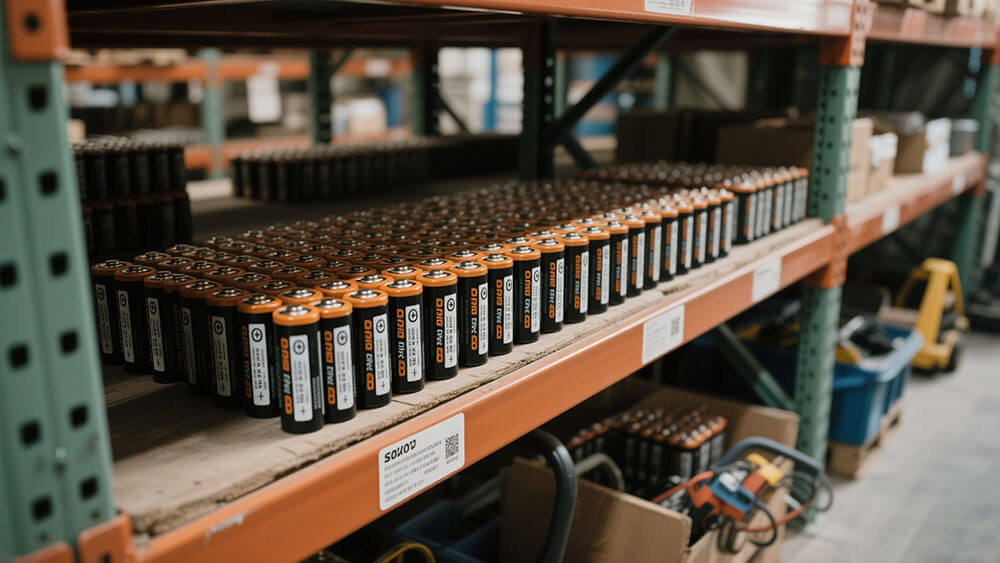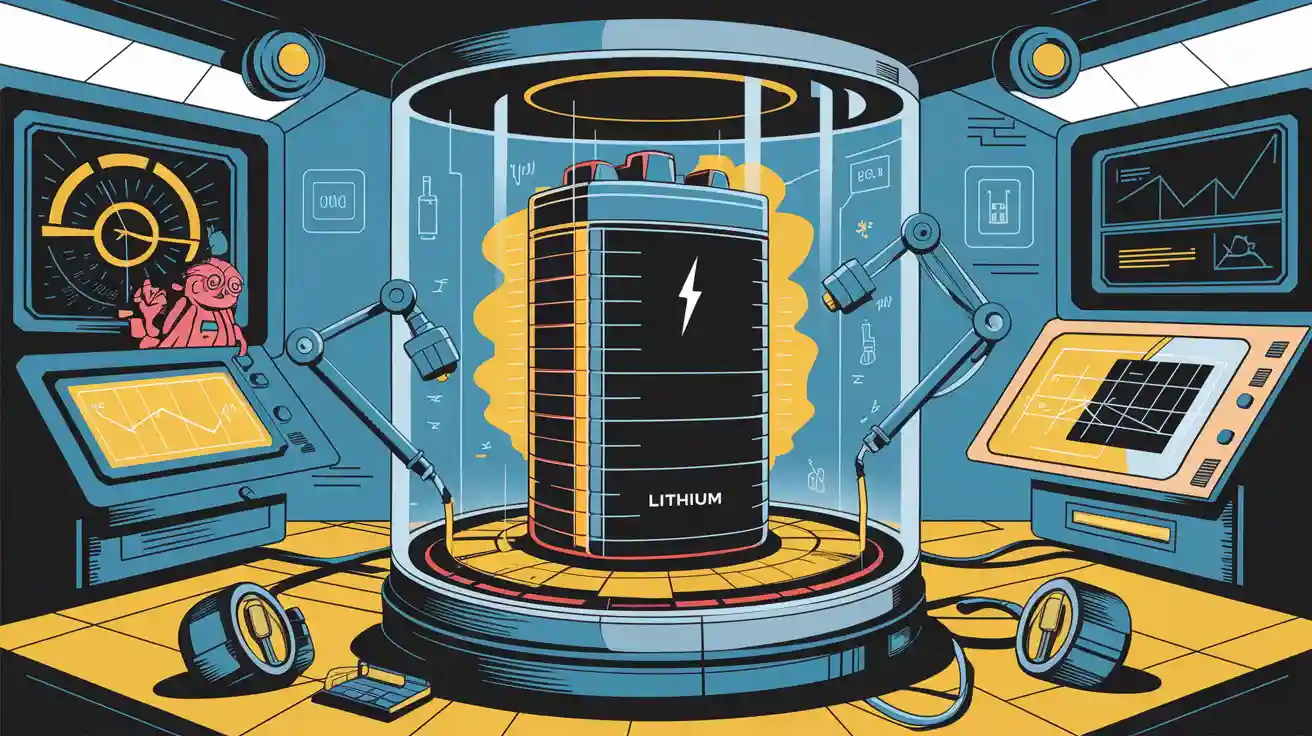Contents

The 26650 Lithium Battery, measuring 26.3 mm in diameter and 65.3 mm in height, is specifically engineered for high-performance applications. Featuring a standard voltage of 3.2V, it delivers dependable energy for industrial tools and high-drain devices. With an anticipated market growth of 7.5% CAGR, the 26650 Lithium Battery has gained widespread recognition for its exceptional energy density, robust safety features, and extended cycle life.
Key Takeaways
The 26650 lithium battery stores lots of energy and lasts long. It works well for tough jobs like power tools and energy storage.
Safety features like heat control and overcharge protection keep it safe. This makes it good for important uses like medical tools and security systems.
Picking the right 26650 battery means checking energy storage, power output, and trusted brands to make sure it fits and lasts.
Part 1: Key Features of 26650 Lithium Batteries

1.1 Definition of 26650 Lithium Batteries
The 26650 lithium battery is a cylindrical rechargeable battery with dimensions of 26.3 mm in diameter and 65.3 mm in height. It is designed to deliver high performance in applications requiring superior energy density and long cycle life. With a nominal voltage of 3.2V and a capacity range of 3000mAh to 6000mAh, this battery type is ideal for industrial tools, energy storage systems, and other demanding applications. Its chemistry options include LiFePO4, NMC, and LCO, each offering unique advantages based on the application requirements.
1.2 Compact Cylindrical Design for Battery Packs
The cylindrical design of the 26650 battery ensures efficient space utilization in battery packs. This design supports easy integration into modular systems, making it a preferred choice for industrial and consumer electronics. The robust structure enhances durability, reducing the risk of mechanical damage during operation. Additionally, the standardized dimensions simplify the manufacturing process, ensuring compatibility across various devices.
Tip: The compact design of 26650 batteries makes them an excellent choice for applications requiring high energy density in limited spaces, such as portable medical devices and robotics.
1.3 High Discharge Rates for Demanding Applications
The 26650 lithium battery excels in high-drain applications due to its ability to sustain high discharge rates. It can deliver continuous currents of up to 20A, with pulse discharge rates exceeding 40A. This capability ensures stable power delivery in demanding scenarios, such as power tools and drones. For instance, users have reported climbing 1,600 feet at full power using these batteries, showcasing their reliability under extreme conditions.
Key Parameters:
Continuous Discharge Current: Up to 20A
Pulse Discharge Current: Over 40A
Capacity Range: 4500mAh to 5800mAh
1.4 Advanced Safety Features and Thermal Management
Safety is a critical aspect of 26650 lithium batteries. These batteries incorporate enhanced safety features, such as overcharge protection, thermal management systems, and robust casing materials. The LiFePO4 chemistry, in particular, offers superior thermal stability, making it less prone to thermal runaway. This characteristic is vital for applications in medical devices and security systems, where reliability and safety are paramount.
Note: The advanced safety features of 26650 batteries align with global standards, including CE, RoHS, and UN38.3 certifications, ensuring compliance with industrial safety requirements.
1.5 Long Cycle Life and Durability
The 26650 battery stands out for its exceptional cycle life. Depending on the chemistry, it can achieve up to 5000 cycles while maintaining over 80% of its original capacity. This durability reduces the need for frequent replacements, lowering operational costs in industrial and infrastructure applications. For example:
Metric | 26650 Battery | 18650 Battery |
|---|---|---|
Capacity | 300mAh to 6000mAh | 1500mAh to 3600mAh |
Discharge Rate | Higher | Lower |
1.6 High Energy Density and Capacity
The superior energy density of 26650 LiFePO4 lithium batteries ensures extended runtime for devices. With an energy density of up to 180Wh/kg, these batteries provide a balance between capacity and weight. This feature makes them suitable for applications requiring high capacity and long-lasting performance, such as energy storage systems and electric vehicles.
Technical Specifications:
Nominal Voltage: 3.2V
Rated Capacity: 3000mAh to 6000mAh
Energy Density: Up to 180Wh/kg
Operating Temperature: -20℃ to 60℃
The combination of high capacity and energy density positions the 26650 battery as a reliable solution for demanding applications. Its versatility and performance make it a valuable component in modern battery packs.
Part 2: Comparison with Other Battery Types

2.1 26650 vs 18650 Batteries: Size, Capacity, and Applications
When comparing the 26650 battery to the 18650 battery, the most noticeable difference lies in their size and capacity. The 26650 battery, with a diameter of 26 mm and a length of 65 mm, is larger than the 18650 battery, which measures 18 mm in diameter and 65 mm in length. This increased size allows the 26650 battery to offer a higher capacity, typically ranging from 3000mAh to 6000mAh, compared to the 18650 battery’s 1500mAh to 3600mAh.
Feature | 26650 Battery | 18650 Battery |
|---|---|---|
Diameter | 26 mm | 18 mm |
Length | 65 mm | 65 mm |
Capacity | 3000mAh to 6000mAh | 1500mAh to 3600mAh |
Weight | ~94 grams | ~45 grams |
Applications | Solar energy storage, power tools, high-power flashlights | Laptops, portable lights, electric bicycles |
Safety Concerns | Requires proper handling and storage to avoid overheating | Lower risk when used individually |
The 26650 battery’s higher capacity and discharge rates make it ideal for applications requiring sustained power, such as solar energy storage systems and industrial tools. However, its larger size and weight may limit its compatibility with smaller devices. On the other hand, the 18650 battery is more compact and widely compatible, making it suitable for consumer electronics and portable devices.
Tip: For applications requiring long runtimes and high energy output, the 26650 rechargeable battery is a better choice. However, ensure proper handling and storage to maximize safety and performance.
2.2 26650 vs Prismatic Lithium Cells: Advantages and Trade-offs
Prismatic lithium cells differ significantly from cylindrical batteries like the 26650 in terms of design and application. While the 26650 battery features a cylindrical shape, prismatic cells have a rectangular design, allowing for better space utilization in compact devices. However, the 26650 battery offers several advantages:
High Capacity: The 26650 battery provides a higher energy capacity, making it suitable for power-intensive devices like electric vehicles and energy storage systems.
Long Lifespan: With proper handling and storage, the 26650 LiFePO4 battery can achieve up to 5000 cycles, reducing replacement frequency and operational costs.
Reliability: The cylindrical design ensures consistent performance and durability, even under demanding conditions.
Eco-Friendly: As a rechargeable option, the 26650 battery contributes to sustainability by reducing waste and supporting a lower carbon footprint.
Despite these benefits, prismatic cells excel in applications where compactness and lightweight designs are critical, such as smartphones and tablets. The choice between these two depends on the specific requirements of your application.
2.3 NMC, LCO, and LiFePO4 Chemistry in 26650 Batteries
The chemistry of a 26650 lithium battery significantly impacts its performance, safety, and lifespan. Among the most common chemistries are NMC, LCO, and LiFePO4. Each offers unique advantages tailored to different applications:
Chemistry | Energy Density (Wh/kg) | Cycle Life | Safety | Applications |
|---|---|---|---|---|
LiFePO4 | 100-180 | 2000-5000 | Very High | Energy storage, electric buses |
NMC | 160-270 | 1000-2000 | Medium | Electric vehicles, portable electronics |
LCO | 180-230 | 500-1000 | Medium | Smartphones, laptops |
Energy Density: NMC batteries provide the highest energy density, making them ideal for applications where weight and space are critical.
Cycle Life: LiFePO4 batteries last longer, with up to 5000 cycles, making them perfect for frequent charging scenarios like energy storage systems.
Safety: LiFePO4 batteries are the safest option, offering superior thermal stability and reducing the risk of thermal runaway.
For industrial applications, the 26650 LiFePO4 battery stands out due to its long lifespan and robust safety features. It is particularly well-suited for energy storage and infrastructure projects.
Note: When selecting a 26650 rechargeable battery, consider the chemistry that best aligns with your application’s energy, safety, and durability requirements.
Part 3: Applications of 26650 Lithium Batteries

3.1 Industrial Equipment and Power Tools
The 26650 rechargeable battery is a cornerstone for powering industrial equipment and high-performance tools. Its high discharge rate ensures consistent energy delivery, even in demanding environments. Industries rely on these batteries for robotics and automated machinery, where reliability and longevity are critical. Their low self-discharge rate minimizes downtime, making them ideal for continuous operations.
For power tools, the 26650 battery offers unmatched performance. It supports high-powered flashlights, drills, and saws, ensuring uninterrupted functionality. The industrial sector values these batteries for their long lifespan, reducing replacement costs and enhancing operational efficiency.
Performance Insight: The industrial sector increasingly adopts 26650 lithium batteries due to their high energy density and stability, essential for managing energy-intensive processes.
3.2 Energy Storage Systems and Infrastructure
Energy storage systems (ESS) benefit significantly from the 26650 rechargeable battery. These batteries maintain over 80% capacity retention after 3,000 cycles, ensuring long-term efficiency. Their application in infrastructure projects, such as renewable energy grids, highlights their sustainability and reliability.
Key Advantages:
High energy density supports compact ESS designs.
Longevity reduces environmental impact by minimizing replacements.
Versatility enables use in solar streetlights and residential storage systems.
The annual growth rate of ESS deployments using 26650 batteries has reached 28% since 2020, reflecting their increasing adoption in renewable energy applications. Their thermal protection and low self-discharge make them a preferred choice for sustainable infrastructure projects.
3.3 Robotics, Medical Devices, and Security Systems
The 26650 rechargeable battery plays a pivotal role in robotics, medical devices, and security systems. In robotics, its high discharge rate ensures smooth operation of motors and sensors. Explore robotics applications here.
For medical devices, the LiFePO4 Lithium battery chemistry offers superior safety and reliability. These batteries power portable medical equipment, ensuring uninterrupted performance in critical scenarios.
Security systems also benefit from the 26650 battery’s long lifespan and reliability. They provide consistent power for surveillance cameras and alarm systems, enhancing operational dependability.
Application Overview:
Sector | Application Description |
|---|---|
Energy Storage | Essential for managing power supply variability from renewable sources, stabilizing the grid. |
Healthcare | Powers medical devices and equipment, ensuring reliability in critical health applications. |
Robotics | Supports motors and sensors in automated systems, ensuring smooth operation. |
Security Systems | Provides consistent power for surveillance and alarm systems. |
The versatility of the 26650 rechargeable battery makes it indispensable across these sectors, ensuring high performance and reliability.
Part 4: Practical Considerations for Choosing and Maintaining 26650 Batteries

4.1 Key Factors for Selecting 26650 Rechargeable Batteries
Choosing the right 26650 rechargeable battery requires careful evaluation of your device’s needs and the battery’s performance characteristics. Start by assessing energy density, power density, and capacity to ensure compatibility with your application. For high-capacity requirements, prioritize batteries with a capacity range of 3000mAh to 6000mAh. Evaluate the discharge rate and cycle life to match the operational demands of your equipment.
When selecting a battery, consider reputable brands known for quality and reliability. Brands like Aspire, Hohm Grown, and Nitecore offer consistent performance and safety. Additionally, check for certifications such as CE and RoHS to ensure compliance with safety standards.
Tip: Always align the battery’s specifications with your device’s power and energy requirements to maximize efficiency and longevity.
4.2 Best Practices for Maintenance and Longevity
Proper maintenance significantly extends the life of your 26650 rechargeable battery. Follow these best practices to ensure optimal performance:
Keep the battery charged between 20% and 80% to reduce stress on the electrodes.
Avoid overcharging or deep discharging, as these can damage the battery’s internal structure.
Store the battery in a cool, dry place to prevent capacity loss due to high temperatures.
Use monitoring tools to track battery health and plan timely interventions.
Recharge the battery every 3-6 months during long-term storage to maintain its functionality.
Periodic deep discharging every 3-4 months can also help maintain capacity. These steps ensure your battery remains reliable, even in demanding conditions.
4.3 Avoiding Common Mistakes in Battery Management
Improper handling can shorten the lifespan of your 26650 rechargeable battery. Avoid these common mistakes to maintain its performance:
Overcharging: Disconnect the battery once it reaches full charge to prevent overheating.
Neglecting Storage Conditions: High temperatures and humidity can degrade the battery’s capacity.
Ignoring Monitoring Tools: Failing to monitor battery health can lead to unexpected failures.
Using Incompatible Chargers: Always use chargers designed for 26650 batteries to avoid damage.
Note: Implementing a condition-based monitoring system can help you track battery parameters and take timely action to prevent issues.
By following these guidelines, you can maximize the lifespan and efficiency of your 26650 rechargeable battery, ensuring it meets the demands of your application.
The 26650 battery offers unmatched performance with high energy density, long cycle life, and robust thermal stability. Its versatility supports applications ranging from flashlights to significant energy storage systems. Industries like infrastructure and electric vehicle manufacturing benefit from its reliability. Explore custom energy storage solutions with Large Power to meet your unique requirements.
FAQ
1. What makes the 26650 lithium battery suitable for industrial applications?
The 26650 lithium battery offers high energy density, long cycle life, and robust safety features. These qualities make it ideal for powering industrial tools and energy storage systems.
Tip: Explore industrial applications to see how 26650 batteries enhance operational efficiency.
2. How does the 26650 LiFePO4 battery compare to NMC in terms of safety?
LiFePO4 batteries provide superior thermal stability and safety. They resist thermal runaway better than NMC batteries, making them ideal for critical applications like medical devices and energy storage systems.
Note: Learn more about LiFePO4 batteries and their advantages.
3. Can 26650 batteries be customized for specific applications?
Yes, you can customize 26650 batteries to meet unique requirements. Customization includes capacity, voltage, and safety features tailored to your application.
Call to Action: Contact Large Power for custom battery solutions designed for your needs.





